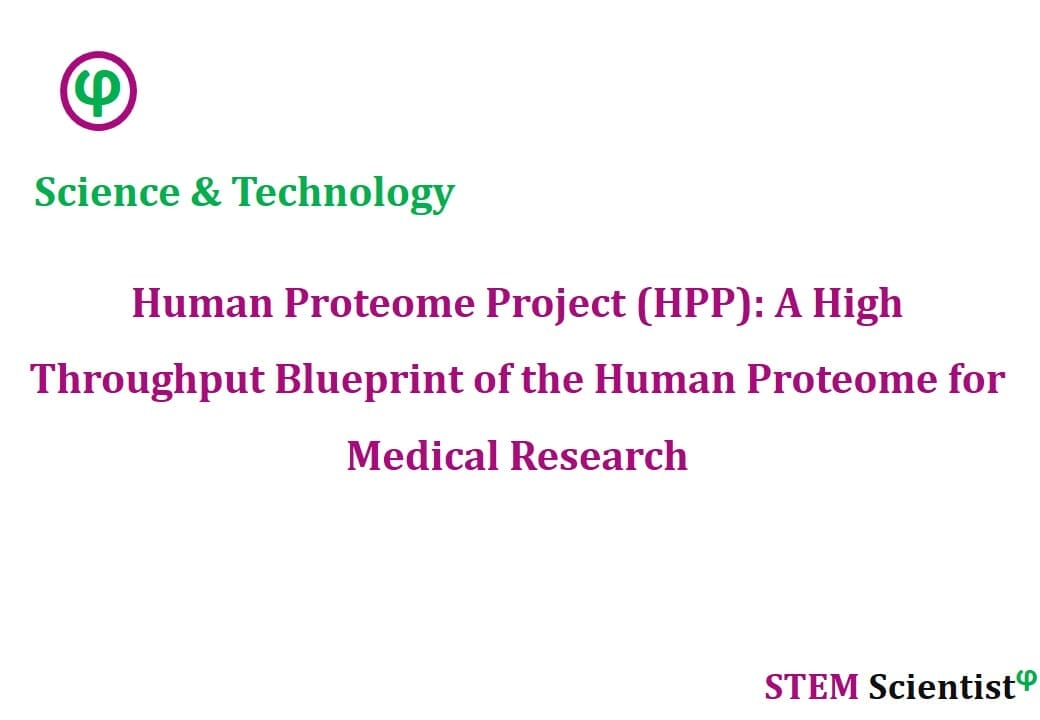
The following study was conducted by Scientists from Faculty of Medicine, Health and Human Sciences, Department of Biomedical Sciences, Macquarie University, North Ryde, NSW, Australia; Faculty of Medicine, Nursing and Health Sciences, Department of Biochemistry and Molecular Biology, Monash University, Melbourne, VIC, Australia; Institute for Systems Biology, 401 Terry Avenue North, Seattle, WA, USA;Faculty of Medicine, SIB-Swiss Institute of Bioinformatics and Department of Microbiology and Molecular Medicine, University of Geneva, Geneva, Switzerland;Department of Computational Medicine and Bioinformatics, University of Michigan, Ann Arbor, USA; UCD Conway Institute of Biomolecular and Biomedical Research, School of Medicine, University College Dublin, Dublin, Ireland;Yonsei Proteome Research Center, 50 Yonsei-ro, Sudaemoon-ku, Seoul, South Korea; Faculty of Dentistry, University of British Columbia, Vancouver, BC, Canada; Functional Proteomics Laboratory, Centro Nacional de Biotecnología-CSIC, Proteored-ISCIII, Madrid, Spain; Department of Molecular Biology, Princeton University, Princeton, NJ, USA; Cedars Sinai Medical Center, Advanced Clinical Biosystems Research Institute, The Smidt Heart Institute, Los Angeles, CA, USA; Science for Life Laboratory, School of Engineering Sciences in Chemistry, Biotechnology and Health, KTH Royal Institute of Technology, Solna, Sweden; Rudbeck Laboratory, Department of Immunology, Genetics and Pathology, Uppsala University, Uppsala, Sweden; Department of Pathology and Oncology, Johns Hopkins University School of Medicine, Baltimore, MD, USA; Biodesign Institute, Arizona State University, Tempe, AZ, USA; Office of Cancer Clinical Proteomics Research, National Cancer Institute, NIH, Bethesda, MD, USA; State Key Laboratory of Proteomics, Beijing Proteome Research Center, National Center for Protein Sciences (Beijing), Beijing Institute of Lifeomics, Beijing, China; Bruker Daltonik GmbH, Microbiology and Diagnostics, Fahrenheitstrasse, Bremen, Germany; Cardiac Proteomics and Signaling Laboratory, Department of Physiology, David Geffen School of Medicine, University of California Los Angeles, Los Angeles, CA, USA; CardiOmics Program, Center for Heart and Vascular Research, Division of Cardiovascular Medicine and Department of Cellular and Integrative Physiology, University of Nebraska Medical Center, Omaha, NE, USA; Department of Chemical Pathology, Royal Prince Alfred Hospital, Camperdown, NSW, Australia; Indian Institute of Technology Bombay, Powai, Mumbai, India; Cancer Biomarkers Research Branch, National Cancer Institute, National Institutes of Health, Rockville, MD, USA; Proteomics Unit and Laboratory of Proteomics, Institute of Chemistry, Federal University of Rio de Janeiro, Rio de Janeiro, RJ, Brazil; University of Grenoble Alpes, Inserm, CEA, Grenoble, France; Departments of Medicine-Cardiology and Biochemistry and Molecular Genetics, University of Colorado, Anschutz Medical Campus, Aurora, CO, USA; Consortium for Fibrosis Research and Translation, University of Colorado, Anschutz Medical Campus, Aurora, CO, USA; Division of Cardiology, Department of Medicine, University of Colorado, Anschutz Medical Campus, Aurora, CO, USA; European Molecular Biology Laboratory, European Bioinformatics Institute, Wellcome Trust Genome Campus, Hinxton, Cambridge, UK; School of Biotechnology and Biomolecular Sciences, University of New South Wales, Sydney, NSW, Australia; Department of Computer Science and Engineering, University of California, San Diego, La Jolla, CA, USA; Department of Biomedical Engineering, Lund University, Lund, Sweden; Department of Biochemistry and Structural Biology, University of Texas Health Science Center San Antonio, UT Health, 7703 Floyd Curl Drive, San Antonio, TX, USA; University of Rennes, Inserm, Rennes, France; Leiden University Medical Center, Leiden, The Netherlands; Department of Genetics, Stanford School of Medicine, Stanford, CA, USA; Faculty of Science, University of Zurich, Zurich, Switzerland. Study is published in Nature Communications Journal as detailed below.
Nature Communications; Volume 11, Article Number: 5301 (2020)
A High-Stringency Blueprint of the Human Proteome
Abstract
The Human Proteome Organization (HUPO) launched the Human Proteome Project (HPP) in 2010, creating an international framework for global collaboration, data sharing, quality assurance and enhancing accurate annotation of the genome-encoded proteome. During the subsequent decade, the HPP established collaborations, developed guidelines and metrics, and undertook reanalysis of previously deposited community data, continuously increasing the coverage of the human proteome. On the occasion of the HPP’s tenth anniversary, we here report a 90.4% complete high-stringency human proteome blueprint. This knowledge is essential for discerning molecular processes in health and disease, as we demonstrate by highlighting potential roles the human proteome plays in our understanding, diagnosis and treatment of cancers, cardiovascular and infectious diseases.
Source:
Nature Communications
URL: https://www.nature.com/articles/s41467-020-19045-9
Citation:
Adhikari, S., Nice, E.C., Deutsch, E.W. et al. A high-stringency blueprint of the human proteome. Nat Commun 11, 5301 (2020). https://doi.org/10.1038/s41467-020-19045-9


